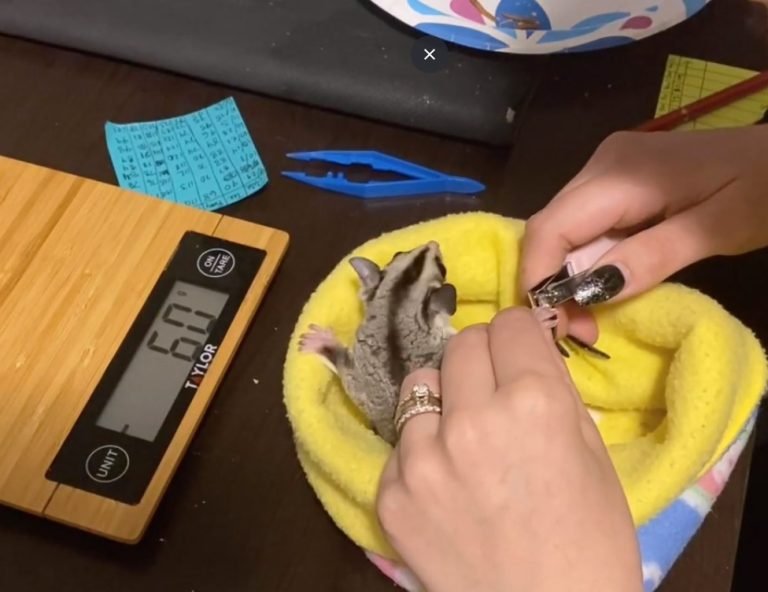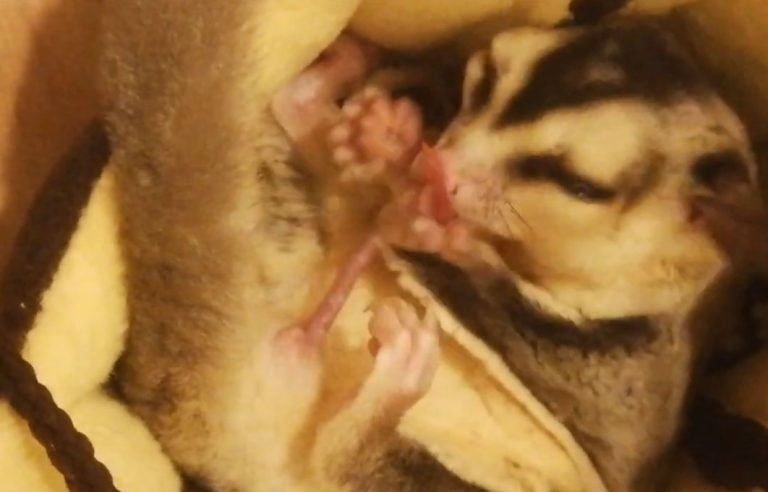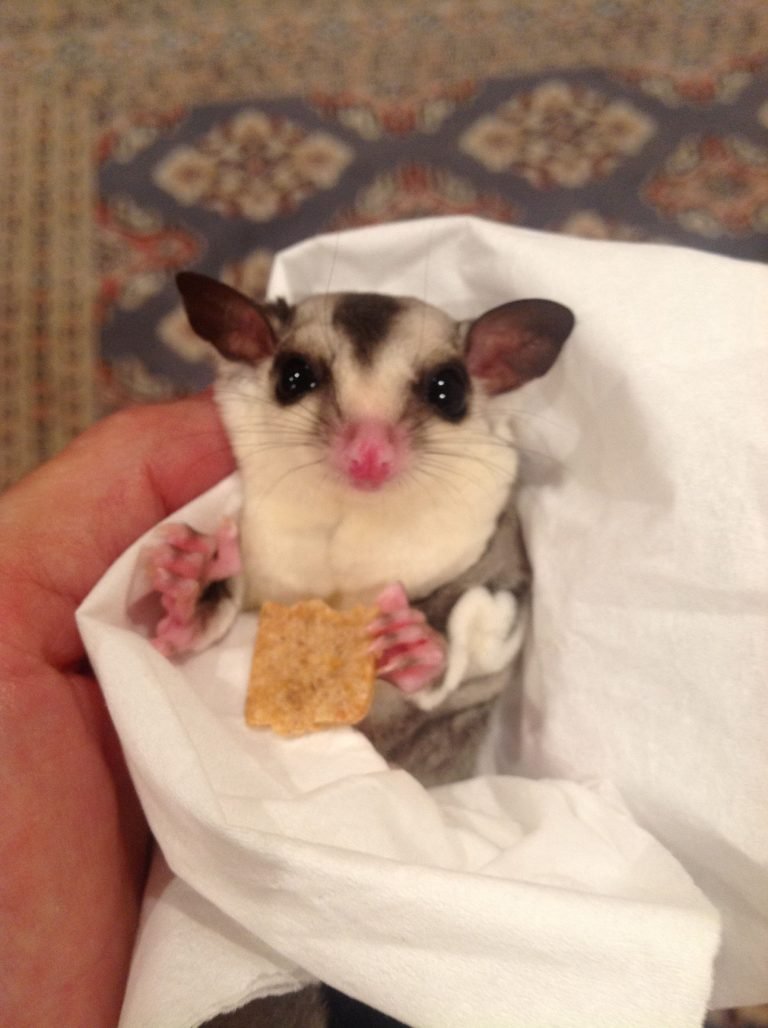Sugar Glider Seizure
Did you know that sugar gliders, those adorable small marsupials, can experience seizures? It’s a distressing issue for both the glider and its owner. Understanding the causes and symptoms of these seizures is crucial for providing proper care. With the right knowledge and support, managing sugar glider seizures can be effective.
Seizures in sugar gliders are no joke. These tiny creatures can suffer from sudden convulsions and involuntary muscle movements that leave them scared and confused. As a concerned owner, it’s important to educate yourself about this condition.
These seizures can stem from various factors such as strokes, gland issues, or even underlying health problems. Seeking veterinary advice is essential to determine the cause and explore appropriate treatment options.
So grab your popcorn (or should we say sugar glider snacks?) because we’re about to dive deep into the captivating world of sugar glider seizure management.
Stay tuned for our video below where we’ll explain more about this concerning health issues faced by sugar gliders!
Understanding Sugar Glider Seizures: Signs and Symptoms:
Sugar gliders experiencing seizures may exhibit convulsions or involuntary muscle movements. These neurological seizures can be distressing to witness, as your pet may lose control of its body. It’s important to recognize the signs and symptoms of sugar glider seizures to provide prompt care.
Seizures in sugar gliders can manifest in various ways. One common sign is the loss of consciousness, where your pet becomes unresponsive. During a seizure, you may also observe uncontrolled twitching throughout their body. These involuntary muscle movements are indicative of a seizure episode.
Observing any changes in behavior or abnormal movements in your pet is crucial for identifying potential health issues. If you notice hind leg paralysis, strokes, depression, diarrhea, injuries, or other unusual symptoms alongside the seizure activity, it could indicate an underlying disease or condition.
To ensure accurate diagnosis and appropriate treatment for your sugar glider’s seizures, consulting a veterinarian is essential. They will perform a thorough examination that may include a fecal exam to rule out any infections or parasites and evaluate for calcium deficiency which can contribute to seizures.
Early intervention plays a vital role in managing sugar glider seizures effectively. By recognizing the signs promptly and seeking professional assistance, you can improve the overall well-being of your beloved pet.
Potential Causes of Sugar Glider Seizures:

Sugar glider seizures can occur due to various factors, including genetic predisposition or underlying health conditions. Infections, nutritional deficiencies, or toxic exposure may also contribute to seizure episodes in these small marsupials. Identifying the root cause of a seizure is crucial for determining appropriate treatment options. It is highly recommended to consult with a veterinarian experienced in exotic pets to investigate potential causes.
- Common Causes: Genetic predisposition and underlying health conditions are common causes of sugar glider seizures.
- Known Causes: Infections, nutritional deficiencies, and toxic exposure are known causes that can trigger seizure episodes in sugar gliders.
- Unknown Causes: Some sugar glider seizures may have unknown causes, requiring further investigation by a qualified veterinarian.
- Infections: Certain infections can lead to seizures in sugar gliders. Examples include bacterial infections or viral diseases.
- Cause Identification: Determining the specific cause of a seizure is essential for developing an effective treatment plan for sugar gliders.
- Consultation with Veterinarian: Seeking guidance from a veterinarian experienced in exotic pets is crucial when investigating potential causes of sugar glider seizures.
Identifying the cause behind a sugar glider’s seizure episode is vital for providing appropriate care and management. By understanding the common and known causes such as genetic predisposition, underlying health conditions, infections, nutritional deficiencies, and toxic exposure, pet owners can work closely with their veterinarians to develop suitable treatment plans. Consulting with an experienced exotic pet veterinarian will ensure thorough investigation into potential causes and improve the overall well-being of these adorable creatures.
Caring for a Sugar Glider Experiencing Seizures:
During a seizure, prioritize your sugar glider’s safety by removing any nearby hazards or objects that could harm them.
Avoid restraining your pet during a seizure as it may increase stress levels and potentially cause injury.
After a seizure episode, provide comfort and reassurance to help your sugar glider recover from the ordeal.
Regular veterinary check-ups are essential to monitor your pet’s condition and adjust their care accordingly.
Remember to seek immediate veterinary attention if you suspect your sugar glider is experiencing a seizure or stroke.
Ensure your sugar gliders live in a safe environment by carefully selecting cage items that minimize potential risks.
Monitor their grooming habits closely as poor grooming can be an indication of underlying health issues that may contribute to seizures.
Take steps to prevent overgrooming and self-mutilation, such as providing mental stimulation and social interaction for your pets.
Schedule regular vet visits to ensure proper treatment and long-term care for your sugar gliders’ well-being.
Keep an eye out for any changes in behavior or physical symptoms that may indicate the need for immediate treatment or intervention.
By following these guidelines and providing appropriate care, you can support your sugar glider through episodes of seizures while ensuring their overall health and happiness.
Impact of Nutrition on Sugar Glider Seizures:
Proper nutrition is crucial for managing sugar gliders prone to seizures. By providing a balanced diet rich in calcium, vitamins, and minerals, you can help reduce the frequency of these episodes. It’s important to avoid feeding your sugar glider foods that are high in sugar or contain harmful additives.
Here are some key points to consider when it comes to the impact of nutrition on sugar glider seizures:
- Poor Diet: A poor diet lacking essential nutrients can contribute to an increased risk of seizures in sugar gliders. Make sure to provide a proper diet that meets their nutritional needs.
- Balanced Diet: Offering a well-balanced diet is essential for maintaining your sugar glider’s health. Include foods that provide adequate amounts of calcium, vitamins, and minerals.
- Avoid High Sugar Foods: Sugary foods can lead to spikes in blood glucose levels which may trigger seizures in sugar gliders. Steer clear of feeding them sugary treats or human food with high sugar content.
- Harmful Additives: Some additives found in processed foods can be harmful to sugar gliders and may increase seizure activity. Check labels carefully and avoid feeding them foods with artificial colors, preservatives, or other potentially harmful additives.
- Consultation with Experts: Seek guidance from a veterinarian experienced in treating exotic pets or consult with an experienced sugar glider owner. They can provide valuable insights into the right nutritional support for your pet.
By prioritizing a healthy and balanced diet while avoiding high-sugar foods and harmful additives, you can significantly improve the well-being of your sugar glider and reduce the likelihood of seizures.
Remember: The information provided here is meant as general advice and should not replace professional veterinary care.
Connection Between Social Interaction and Sugar Glider Seizures:
Sugar gliders, those adorable little creatures known for their big eyes and fluffy tails, have a fascinating connection between their social interaction and the occurrence of seizures. Here’s what you need to know:
- Social interaction positively impacts well-being: Sugar gliders thrive on social interaction, which plays a vital role in their overall well-being. Engaging with these furry friends can potentially reduce the occurrence of seizures. So, spending quality time with your sugar glider buddy can be beneficial for both of you.
- Lack of socialization contributes to stress levels: Just like people, sugar gliders can feel lonely too. Lack of socialization and environmental enrichment may contribute to increased stress levels in these tiny marsupials. And as we all know, stress can be a trigger for seizures.
- Playtime and companionship alleviate stress-related seizures: The good news is that regular playtime and bonding activities can help alleviate stress-related seizures in sugar gliders. Setting aside dedicated play sessions where they can explore, glide around (as they love doing), and interact with you will go a long way in keeping them happy.
- Creating a stimulating environment is essential: To ensure your sugar glider’s mental health is at its best, create a stimulating environment for them. Provide toys for entertainment, climbing structures to satisfy their natural instincts, and hiding spots where they can retreat when needed. This enriching environment will keep them engaged and reduce the likelihood of seizure triggers.
By understanding the importance of social interaction and environmental enrichment for sugar gliders, we can take steps to prevent unnecessary distress that could lead to seizures. So let’s make sure our tiny buddies live their best lives filled with love, companionship, and plenty of opportunities to play!
Key Takeaways on Sugar Glider Seizures
Seizures in sugar gliders can be a concerning and distressing experience for both the pet and its owner. Understanding the signs, potential causes, and proper care during these episodes is crucial to ensuring the well-being of your furry friend.
Signs and symptoms of sugar glider seizures may include twitching, convulsions, loss of consciousness, or uncontrolled movements. If you notice any of these signs, it is essential to seek veterinary assistance immediately.
The causes of sugar glider seizures can vary, ranging from genetic predispositions to environmental factors such as stress or inadequate nutrition. Providing a safe and stimulating environment for your sugar glider can help reduce the likelihood of seizures.
Caring for a sugar glider experiencing seizures requires patience and diligence. It is important to remain calm during an episode while ensuring their safety by removing any hazards nearby. Comforting your pet with gentle strokes or soothing words can also provide reassurance.
Nutrition plays a vital role in managing sugar glider seizures. A balanced diet rich in vitamins and minerals can help minimize seizure episodes. Consult with a veterinarian experienced in exotic pets to determine the most appropriate diet for your sugar glider’s specific needs.
Social interaction is another crucial aspect that impacts sugar gliders’ overall health, including seizure frequency. Regular playtime, bonding activities, and companionship with other compatible gliders can contribute positively to their well-being.
In conclusion, being aware of the signs and symptoms of sugar glider seizures allows you to take prompt action when necessary. By providing proper care, nutrition, and social interaction while addressing potential triggers, you can significantly improve your pet’s quality of life.
Remember that each individual case may vary; therefore, consulting with a qualified veterinarian who specializes in exotic animals is always recommended when dealing with sugar glider seizures.
FAQs
1.Can stress trigger seizures in my sugar glider?
Stress can indeed be a contributing factor to sugar glider seizures. Ensuring a calm and comfortable environment for your pet is essential to minimize stress levels.
2.Are sugar gliders prone to genetic-related seizures?
While not all sugar gliders are genetically predisposed to seizures, some individuals may have a higher likelihood due to their genetics. It is important to consider the lineage of your sugar glider when assessing the risk.
3.Can I prevent sugar glider seizures through diet alone?
While nutrition plays a significant role in managing seizure frequency, it may not be the sole solution. A balanced diet should be complemented by appropriate care, social interaction, and addressing potential triggers.
4.How long do sugar glider seizures typically last?
The duration of sugar glider seizures can vary from a few seconds to several minutes. It is crucial to monitor the length of each episode and seek veterinary guidance if they become prolonged or frequent.
5.Should I attempt to restrain my sugar glider during a seizure?
No, it is best not to restrain your sugar glider during a seizure as this could potentially cause harm or increase stress levels. Instead, focus on ensuring their safety by removing any nearby hazards.
6.Can medication help manage sugar glider seizures?
In some cases, medication prescribed by a veterinarian may be necessary to manage and reduce seizure activity in sugar gliders. Consult with an experienced exotic pet veterinarian for proper evaluation and guidance.







